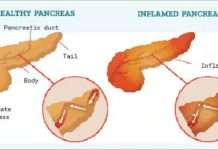
Anorexia, also known as anorexia nervosa, is a medical term for loss of appetite and fear of shape loss. Its manifestations may be harmless but can also indicate a serious clinical condition or pose a significant risk.
Anorexia often results from emotional trauma, depression, or anxiety. Some people, however, may view extreme dieting or weight loss as a way to regain control of their lives.
Bulimia (bulimia nervosa) is an advanced stage of anorexia, in which patients develop an unhealthy relationship with food over time. Anorexic patients tend to get caught up in damaging cycles of binge eating and then panic about the calories they’ve consumed. This may lead to extreme behaviours to prevent weight gains such as self-instigated purging and extreme exercises.
Anorexia and bulimia are classified as eating disorders and can be complex, and multifactorial, and determined by individual body reactions. They tend to require psychological and pharmacological treatments.
Although anorexia and bulimia are not specific to age or gender, they have been known to be commonly found among women. According to the National Association of Anorexia Nervosa and Associated Disorders (ANAD), about 10 percent of global women will develop anorexia, and 11 percent will develop bulimia.
Women are naturally known to be smaller in physique, compared to men, who are bigger and broader. Many women tend to suffer a lot from the fear of running out of shape due to pregnancy, eating habits, contraceptives, medicines and supplements.
Anorexia and bulimia are just symptoms and not diagnoses. A clinical psychology review conducted by W.L. Wolfe et al, titled, “The relationship between eating disorders and substance use: moving beyond co-prevalence research” revealed that clinicians working with individuals who have eating disorders are all too aware of the fact that comorbid psychiatric diagnoses often complicate case conceptualization and treatment planning.
CAUSES OF ANOREXIA AND BULIMIA
- Genetics. Anorexia might be hereditary if a member of a family is affected and is not corrected and passed on. This may be because of a genetic predisposition to traits associated with eating disorders, such as perfectionism. Although more research is needed to determine whether there’s truly a genetic link.
- Emotional well-being. People who have experienced trauma or have mental health conditions, such as anxiety or depression, may be more likely to develop an eating disorder. Feelings of stress and low self-esteem may also contribute to these behaviors.
- Societal pressures. The current Western ideal of body image, self-worth, and success equated with thinness can perpetuate the desire to achieve this body type. This may be emphasized further by pressure from the media and peers.
TREATMENTS OF ANOREXIA and BULIMIA
There’s no quick cure for anorexia and bulimia, but there are a number of treatments available to treat both. These include:
MEDICATION: Medication has shown little efficacy for the treatment of anorexia, while medicinal options for bulimia appear to be a little more promising.
THERAPY: In this process, it may involve addressing past trauma, which could have caused a need for control or low self-esteem. It may involve patients questioning their motivations for extreme weight loss. A therapist can also help in developing practical, healthy ways to deal with triggers.
OUTPATIENT AND INPATIENT TREATMENTS: Anorexia and Bulimia are treated in both outpatient and inpatient settings.
Outpatient treatment is often the preferred approach by many. This is because it helps them to see their doctor, therapist, and nutritionist regularly, and still resume their daily life.
However, inpatient treatment is sometimes required. In this case, the patient will be hospitalized or placed in a live-in treatment program designed to help them overcome their disorder.













